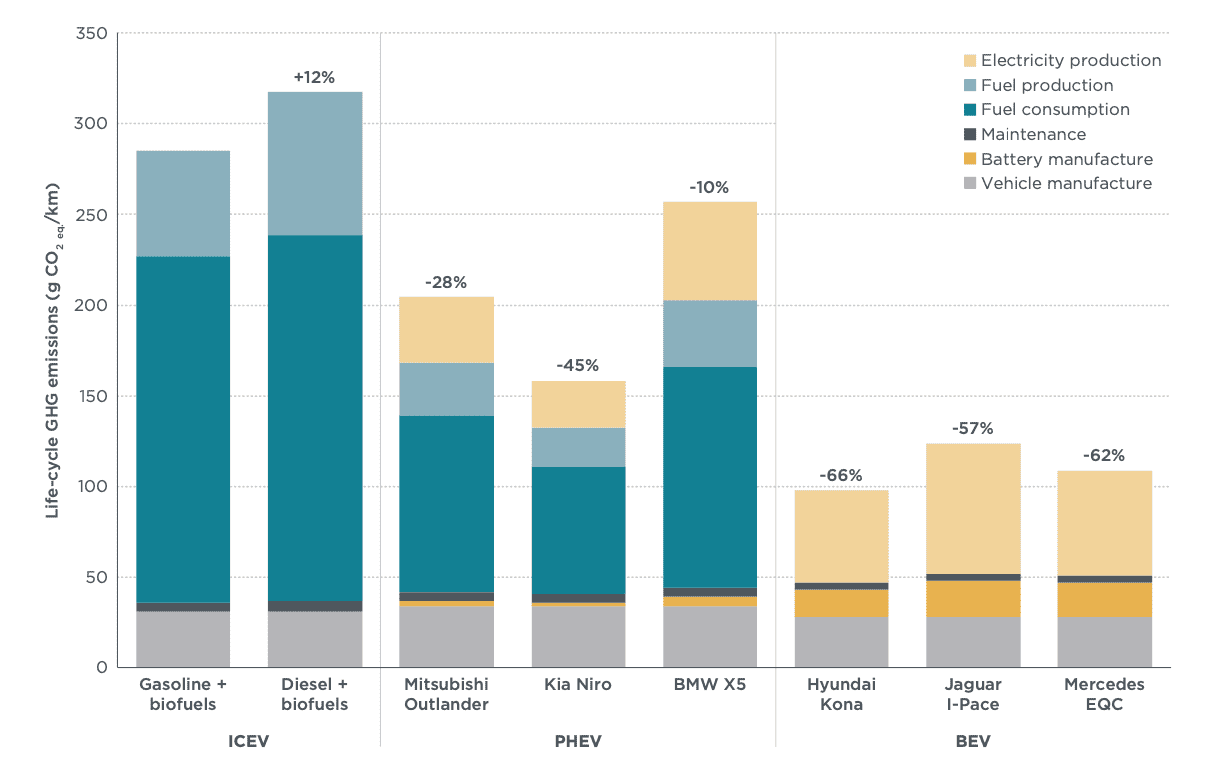White paper
More bang for the buck: A comparison of the life-cycle greenhouse gas emission benefits and incentives of plug-in hybrid and battery electric vehicles in Germany
This study presents a life-cycle assessment of the greenhouse gas (GHG) emissions of selected models of plug-in hybrid vehicles (PHEVs) and battery electric vehicles (BEVs). The assessment covers the emissions during fuel and electricity production and consumption, as well as battery and vehicle manufacturing and recycling. In a second step, the study compares the life-cycle GHG emissions benefit of the PHEV and BEV models over segment average gasoline vehicles with the national level fiscal incentives in Germany.
The analysis finds that the life-cycle GHG emissions of the analyzed BEV models are, on average, 63% lower than respective segment average new gasoline combustion engine vehicles. With values ranging between 57% and 67%, the GHG emissions benefit of the BEV models is relatively similar, with differences determined by the electric energy consumption. For PHEVs, the life-cycle GHG emissions are, on average, 34% lower than gasoline vehicles, and show a relatively large variation of between 10% and 52%. This is due to different energy efficiency of the PHEV models and the electric drive shares in average real-world usage.
The analysis also shows that most PHEVs show a lower ratio of life-cycle GHG emissions benefit per costs of fiscal incentives than BEVs. A reduction of the total fiscal incentives for PHEVs by €2,500 would result in a similar average ratio of the GHG emissions benefit to fiscal incentives as for BEVs.
Based on the study’s findings, the authors recommend that the purchase subsidy for PHEVs should be reduced or limited to those with low fuel consumption during real-world operation. In contrast to BEVs, PHEVs are not able to meet the long-term requirements of a climate neutral passenger car fleet. The new registration of PHEVs should therefore be phased out after about 2030.
Fact sheets: English and Deutsch

Life-cycle GHG emissions of selected SUV segment PHEV and BEV models compared to average SUV segment gasoline and diesel ICEVs driven in Germany in 2021 to 2038.
